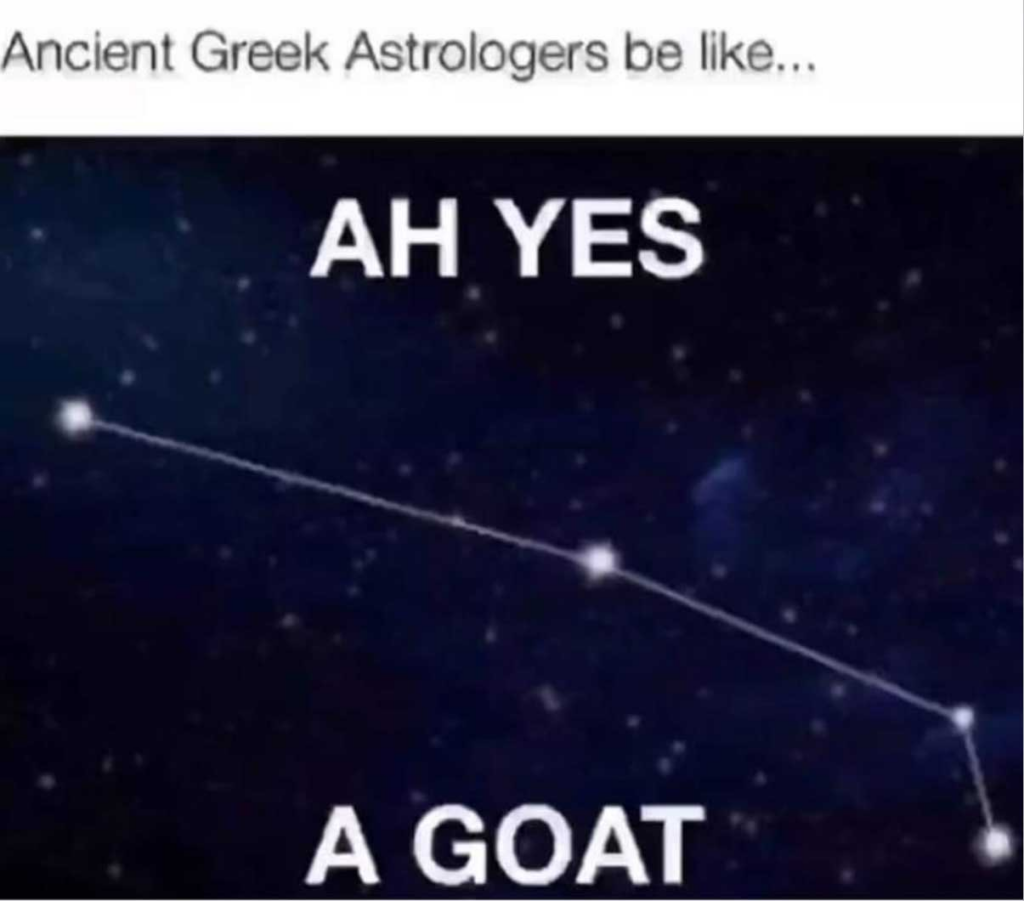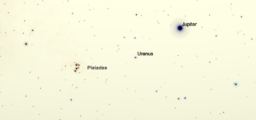Sky Report: September 25 – October 1, 2023

This week we’re back to the planets.
If you’re up before the sky gets too bright with the approaching dawn you can’t fail to marvel at Venus, the brilliant “morning star” well up in the east. Venus rises 3-1/3 hours before the sun so you can see it against a fully dark sky and then watch it slowly fade as the sky brightens. How late in the morning can you still see it? Surprisingly, you can see it all day until it sets in the mid-afternoon if your sky is relatively dust-free. Try it! Venus is 1/3 illuminated by the sun so telescopically it looks like a tiny 1/3-full crescent moon.
Little Mercury is nearby, both much lower and much fainter. During the first half of this week Mercury rises an hour before the sun, so 40 minutes before sunrise it sits about 7° above the due east true horizon almost 30° to the lower left of Venus at the 7 o’clock position.
In the evening sky you have Jupiter and Saturn. Saturn is out when it gets dark but Jupiter doesn’t rise until around 9ish. Look for Saturn a third of the way up the southeastern sky when the sky has grown fully dark. Saturn is in the large constellation that has no bright stars named Aquarius, the Water Carrier, the Culligan Man of his day before indoor plumbing when water was delivered to your door. You’ve heard of it only because planets like Saturn plus the sun and moon pass through it.
Ditto Aries the Ram which hosts Jupiter. Aries has only 3 moderately bright stars and a lot of prime real estate trafficked by the sun, moon, and planets as Jupiter is demonstrating tonight. Yet it’s seen as a male sheep.
It’s important to realize that the constellations were NOT named because they looked like what they’re named after, but in honor of that person or object. No one ever thought Aries resembles a sheep, but sheep and goats were the most important domestic animals when and where Aries was named, which was in Babylonian times (earlier it was identified with a “hired hand”). We still do similar things today: the state of Washington looks nothing like the guy on our dollar bill. In the Middle Ages and especially in the Renaissance star maps were to look beautiful as well as be useful and then began the tradition of filling in the sky with decorative pictures. Google “history of constellations” for many centuries of interesting reading.
Saturn sits 3½° above the nearly-full moon on Tuesday the 26th.
The full moon on September 29 is the last so-called “supermoon” of the year. It won’t look any different than any other full moon.
If you have a telescope look for Comet Hartley, presently about 9th magnitude in Auriga. Google it for details.
And a reminder that a near total eclipse of the sun happens on the morning of October 14. Google “eclipse October 14” for details.
Stellar Vista Observatory provides portable telescopes and tripod mounted binocular kits on loan for free to residents and visitors in Kane County. Enhance your enjoyment of the night sky! To learn more, request a loan, or attend one of SVO’s free public star parties for 2023, visit https://stellarvistaobservatory.org/ or drop in to the Kane County Office of Tourism. Everyone is welcome!






Comments are closed.